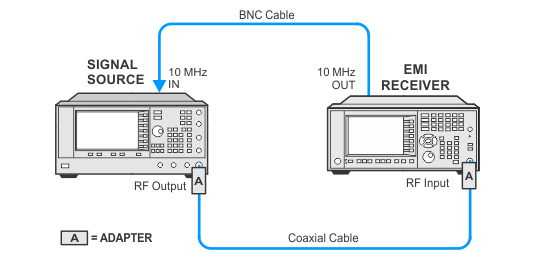
IF Frequency Response is one component of the EMI receiver Error Vector Magnitude (EVM) spec.
In this test a 1.825 GHz, -10 dBm signal is applied to the DUT. This input level establishes a mixer level of –20 dBm. A reference amplitude is taken with the input signal centered at the DUT center frequency. The DUT center frequency is then changed to set the input signal at various offsets within the FFT span of interest. At each offset frequency the amplitude is measured by the DUT. The amplitude difference between the offset frequency and the reference frequency is reported as the IF Frequency Response. This measurement is performed in IQ analyzer mode, so the span is also the FFT width. This measurement is performed for the standard 10 MHz IF path. If Option B25 is installed the bandwidth is 25 MHz, for Option B85/B1X the bandwidth is 85 MHz, and for Option B40 the bandwidth is 40 MHz.
Click here for troubleshooting.
|
Test Equipment |
Model Number1 |
|---|---|
|
Microwave Signal Generator #1 |
PSG Models |
|
Cable, BNC |
8120-1840 |
|
Cable, 3.5 mm coaxial |
11500E |
|
Adapter, 3.5 mm (f) to 3.5 mm (f)
|
83059B |
|
Adapter, Type-N (m) to 3.5 mm (f) |
1250-1744 |
|
Adapter, 2.4 mm (f) to 3.5 mm (f)
|
11901B |
|
